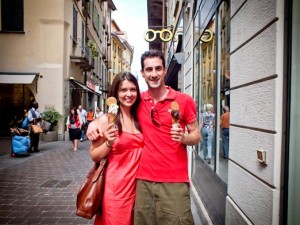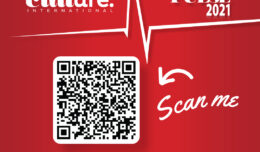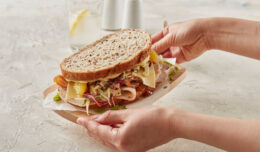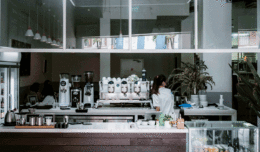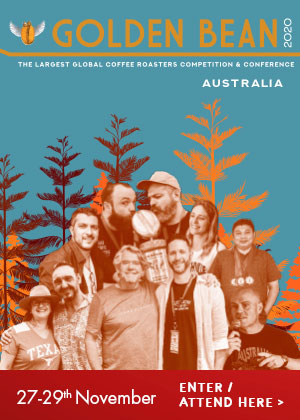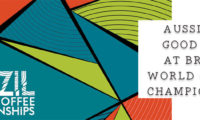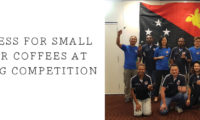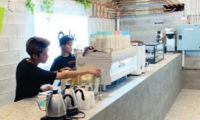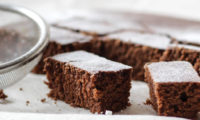Italy! Its very name conjures endless images, many of which reflect a culture obsessed with cuisine and coffee. So when a close friend announced she was getting married by Northern Italy’s Lake Como, we just knew we had to do everything in our power to get there.
Fast forward to September 5th and less than 5 hours after competing in the Da Vinci State of Origin Team Barista Championship, Habib (Maarbani) and I were on a plane to Italy.
With only two weeks at our disposal, we decided against following the well-trodden tourist tracks in favour of finding our own way across the lesser-known parts of Italy’s north.
Our itinerary was designed to take us across four different regions – similar to our states, but with very defined differences in agriculture, dialect, cuisine and traditions. The idea was to sample the quintessential food and cultural quirks of each of the regions in an attempt to form a somewhat rounded understanding of what Italian culture is all about. When I say ‘culture’, what I really mean is food culture, café culture and all that is delectable in between.
What followed was a two week gastronomic journey fit only for the most fanatical of ‘foodies’; we wined and dined, ate our respective body weights in cheese and chocolate and drank more coffee than even we thought possible. That’s a lot of coffee! It was an utterly indulgent adventure which showed me a new perspective on food and coffee and taught me several valuable lessons, which I’d like to share:
Lesson One. Keep it Simple
An article I once read in a food journal mentioned that the Italians ‘choose few ingredients and let them speak for themselves’, or something to that effect. What I didn’t know at the time was how well this statement epitomised the Italian approach to food.
The philosophy is such: pick a handful of ingredients and blend them delicately, so that only one or two ingredients are allowed to shine.
I can recall several occasions at the beginning of this holiday when I would stare at my dinner and wonder if the chef had forgotten to add an ingredient or two. These plain-looking dishes were always the tastiest, and I soon came to understand the importance of simplicity in food.
Lesson Two. It’s All in the Produce
The Italians may only use a handful of ingredients, but these ingredients are of stellar quality, often grown and sold only in the local area. The demand for locally grown produce reflects the desire of the Italian people to understand where and how their produce is grown. This desire also explains why there remains large variances in cuisine from region to region. In fact, there are many regional produce commissions, which monitor the production of everything from cheese to prosciutto and even wine, ensuring that all ingredients, and therefore final products, meet the highest of standards.
Slowly we’re seeing a similar trend in Australia, with the rise in popularity of farmers’ markets, organic produce and the whole foods movement. But, while it may be a trend here, it is simply a way of life for those in Italy.
Lesson Three. What Do You Mean, ‘Takeaway’?
Take a moment to think about the kind of order you might receive from a typical Australian coffee consumer:“I’ll have a large flat white, extra hot, takeaway”. Having spent years behind a coffee machine in Australia, these are the orders I am used to. Imagine my disbelief at walking into an Italian coffee café and witnessing almost all customers slamming back an espresso, grabbing a pastry and leaving! Coffee in both countries is a way of life, yes, but while Australians treat a coffee as a chance to sit and chat with friends, for the Italians it is a fast and effective dietary staple.
As I visited many coffee bars, I quickly learnt that ‘un caffe’ (‘one espresso’) was the standard order and that almost all patrons choose to have their drink while standing at the bar. One noticeable feature of Italian coffee bars is the pace.
Milk based drinks, served mainly as a morning beverage, are presented luke warm so that customers can polish them off in a matter of seconds – something I witnessed many people do. Needless to say, I didn’t see a single takeaway coffee cup in any of these stores, nor littering the streets, for that matter.
It is a beautiful world that exists without 12 oz serving sizes, scalding milk and the environmental impact of takeaway cups. I can only hope that it catches on here …
Lesson Four. Robusta – Not Such a Dirty Word After All.
My first job in the coffee industry was in a specialty café, using specialty coffee in a specialty way. Couple this with several specialty barista competitions, and I’d be forgiven for thinking that ‘Robusta’ was a dirty word. But how can a bean that is shunned by specialty coffee scenes around the world be the star of coffee in Italy, a country known globally for its love of coffee?
By sampling coffee in many different areas, I found that the flavour profiles, even throughout different regions, were surprisingly consistent: a strong upfront hit and slightly bitter finish, with nothing all too remarkable in-between. I’m the first to admit that the Robusta ‘hit’ is unique; it’s pungent, powerful and intoxicating all at once. But while such a powerful kick is seldom sought after in Australia, its prevalence in Italy confirms its overwhelming popularity. In my opinion, this profile is designed to fulfil the ‘quick hit’ purpose of Italian espresso, while satisfying a public which revels in all things bitter (Chinotto and Campari, both bitter drinks, are everywhere you look).
I must also add that although I wasn’t too keen on the powerful first sip of these espressos, I came to enjoy the slightly bitter finish, which wasn’t offensive but rather interesting on the tongue. The Italian coffee scene had taught me to step away from my preconceptions and enjoy coffee the way the Italians do – simply and wholeheartedly.
So if you’re looking to travel to Italy, I highly recommend making your own way around, avoiding the tourist attractions and living like the locals do. It will enlighten your taste buds and perhaps challenge your perceptions, but who knows what you may learn in the process?
Our Suggestions
Turin. Café capital of Italy and the place where chocolate was first made into solid blocks – what’s not to love?
Platti.
Via Emmanuele II, 72.
One of the original Italian coffee houses. An absolute must.
Al Bicerin.
Piazza Della Consolata, 5.
Home of the oldest hot chocolate recipe in Italy, Ciocolatta In Bevada.
Otto Tre Quarti.
Piazza Solferino, 8/C.
A very popular restaurant, with food so delicious it was worthy of two visits in as many days.
Alba.
A regional city, just outside of Turin, known for its wineries and fine cuisine.
Dulcis Vitis.
Via Ratazzi, 7-7/A.
A great ristorante run by Bruno Cingolani, a man who has 900 bottles of wine in his cellar and a penchant for truffles.
Bologna.
Home of Parmagiano-Reggiano cheese, neighbour to the great balsamic of Modena and a quick drive from some of the best prosciutto producers in the world.
Trattoria del Rosso.
Via Augusto Righi, 30.
Cheap, delicious and traditional food.
La Sorbetteria Castiglione.
Via Castiglione, 44.
In the words of a local, “We call it the temple of gelato”. Enough said.


